Spain’s history from 1930 to 1950 was marked by significant political upheaval, war, and a transition to dictatorship. The philatelic issues from this period reflect these dramatic changes. Here is a detailed look at the stamps issued during this period and the historical context in which they were released:
Historical Context
- 1930-1931: The Fall of the Monarchy and the Second Republic
- End of Monarchy: In 1931, King Alfonso XIII left Spain following municipal elections that showed overwhelming support for republican candidates. This led to the proclamation of the Second Spanish Republic on April 14, 1931.
- Republican Reforms: The Second Republic initiated significant political and social reforms, including land reforms, educational expansion, and the separation of church and state.
- 1936-1939: Spanish Civil War
- Civil War Outbreak: The Spanish Civil War began in July 1936 when a faction of the military, led by General Francisco Franco, rebelled against the Republican government. The war was marked by severe brutality and international involvement, with the Republicans supported by the Soviet Union and International Brigades, and the Nationalists backed by Nazi Germany and Fascist Italy.
- Nationalist Victory: The war ended in 1939 with Franco’s Nationalist forces claiming victory. Franco established a military dictatorship that would last until his death in 1975.
- 1939-1950: Francoist Spain
- Dictatorship: Franco’s regime was characterized by authoritarian rule, repression of dissent, and a single-party state under the Falange Española Tradicionalista y de las JONS. The regime also promoted conservative values and close ties with the Catholic Church.
- World War II and Post-War Isolation: Although Spain remained officially neutral during World War II, it provided material support to Axis powers. After the war, Spain was largely isolated internationally until it gradually reintegrated into the global community during the Cold War.
Philatelic Issues from 1930 to 1950
- Second Spanish Republic (1931-1939)
- Republican Themes: Stamps from the early 1930s often featured symbols of the Republic, such as the republican tricolor flag, allegorical figures representing liberty and progress, and prominent cultural and historical figures.
- Cultural and Educational Initiatives: There were issues promoting literacy, public health, and infrastructure projects, reflecting the Republic’s reformist agenda.
- Spanish Civil War (1936-1939)
- Propaganda Stamps: Both the Republican and Nationalist sides issued stamps as propaganda tools. Republican stamps often featured calls for resistance and international solidarity, while Nationalist stamps emphasized order, tradition, and the military.
- Local and Regional Issues: Various regions under different control issued their own stamps, adding to the complexity and diversity of the philatelic landscape during the war.
- Francoist Spain (1939-1950)
- Post-War Reconstruction: Early Francoist stamps reflected themes of national unity, reconstruction, and the glorification of Franco’s leadership. They often depicted Franco himself, military motifs, and traditional Spanish imagery.
- Cultural and Historical Commemorations: Stamps issued during this period celebrated Spain’s historical figures and events, with an emphasis on conservative and nationalist interpretations of Spanish history.
- Philatelic Issues for Propaganda: The regime used stamps as a means to propagate its ideology, with themes reinforcing the regime’s values and achievements.
Notable Stamp Series and Issues
- 1931 Proclamation of the Republic: Stamps commemorating the establishment of the Second Republic featured allegorical images and symbols of liberty.
- 1936-1939 Civil War Issues: Both sides produced a variety of stamps, including overprints on existing issues and new designs. These stamps are a testament to the intense propaganda efforts during the war.
- Franco Portrait Series: From the late 1930s onwards, stamps often featured portraits of Franco, emphasizing his role as the Caudillo (leader) of Spain.
- Cultural Celebrations: Issues from the 1940s and 1950s often celebrated Spain’s cultural heritage, including famous artists, writers, and historical events.
Collecting Tips
- Condition and Rarity: As with all stamps, the condition (mint or used) and rarity significantly impact value. Civil War issues, due to their varied and often chaotic production, can be particularly rare and valuable.
- Authenticity: Given the potential for forgeries, especially of high-value issues, authentication by reputable experts is crucial.
- Comprehensive Cataloging: Utilize specialized catalogs such as the Edifil or Scott catalogs for detailed listings and valuations of Spanish stamps from this period.
Stamps from Spain between 1930 and 1950 offer a rich and complex field for collectors, reflecting the turbulent and transformative history of the country during these decades.

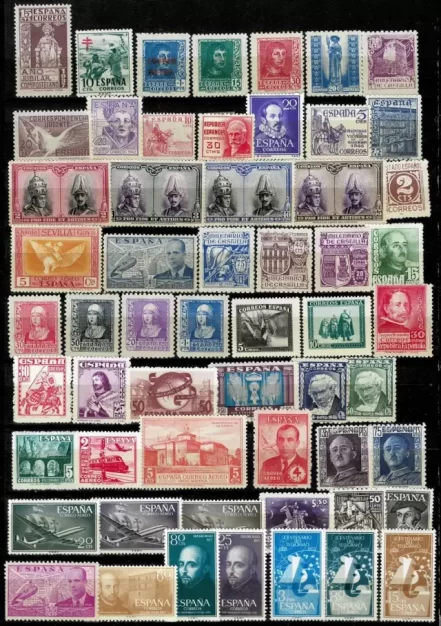
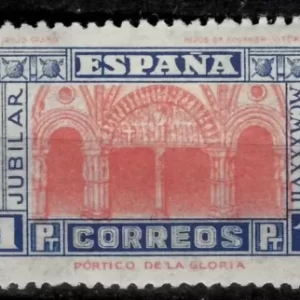

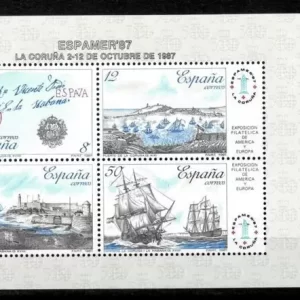
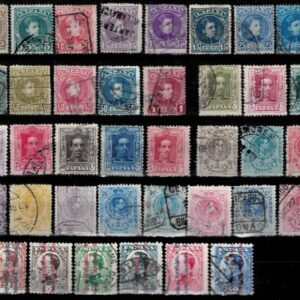

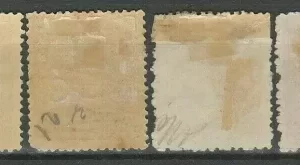
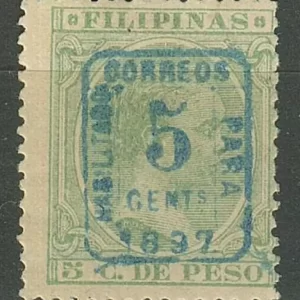
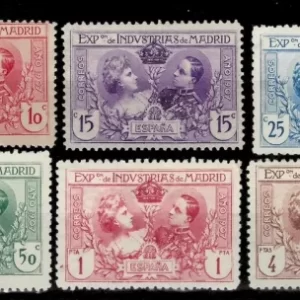
Reviews
There are no reviews yet.